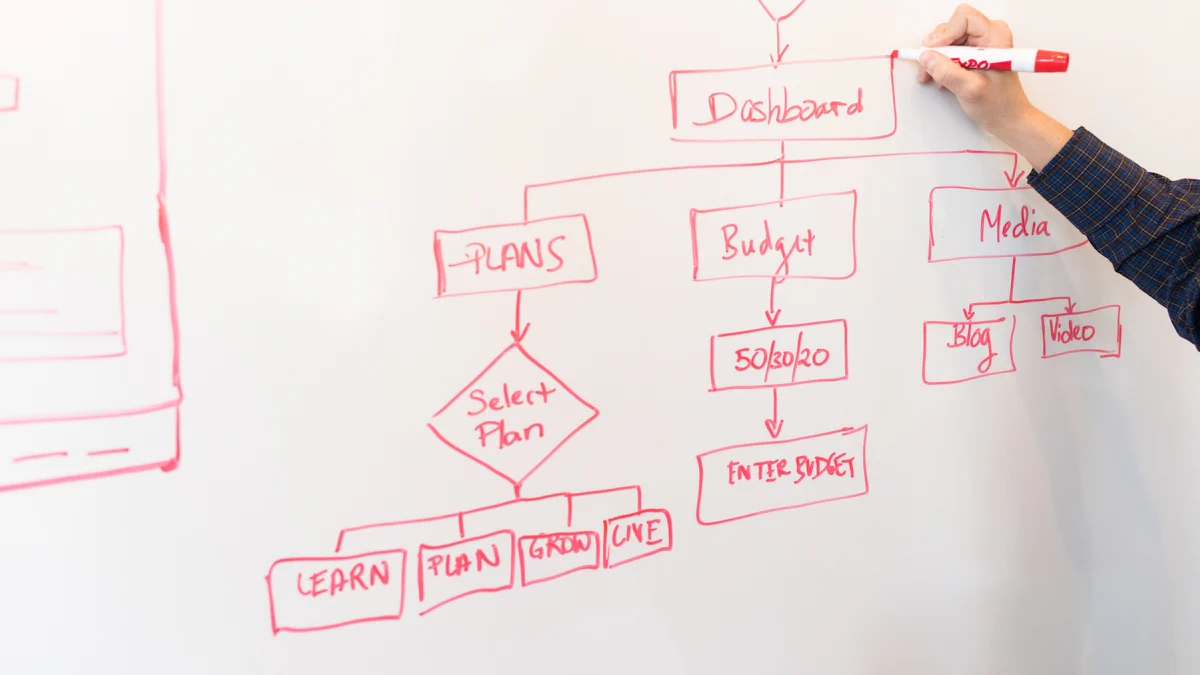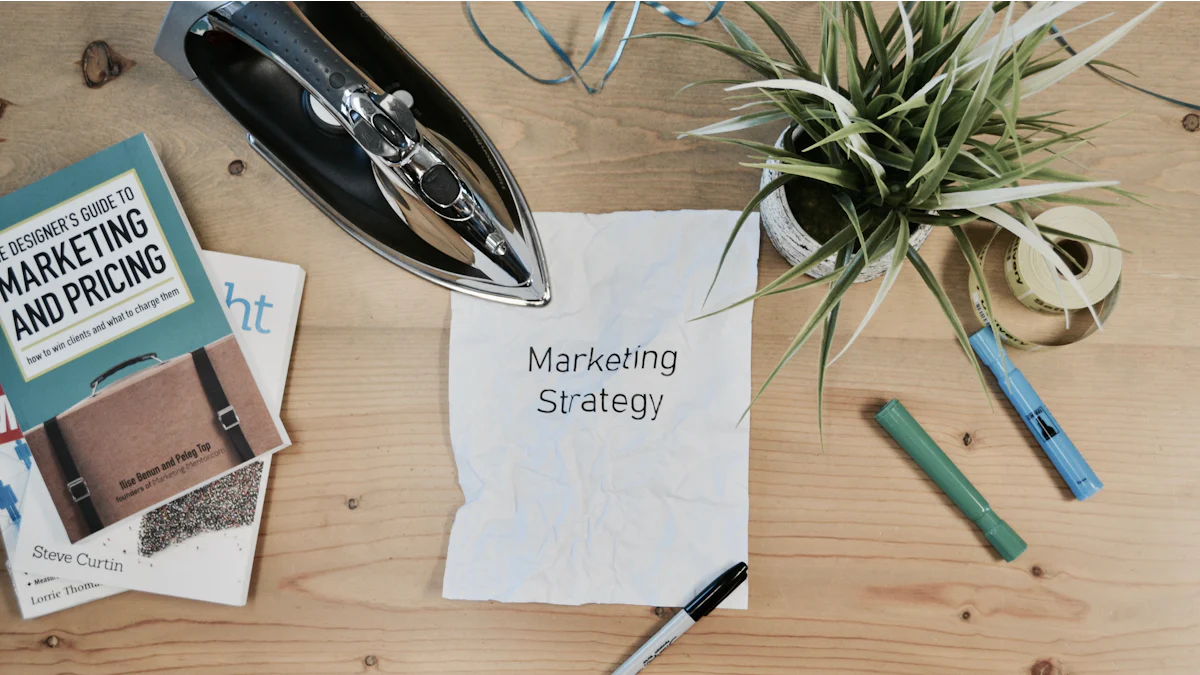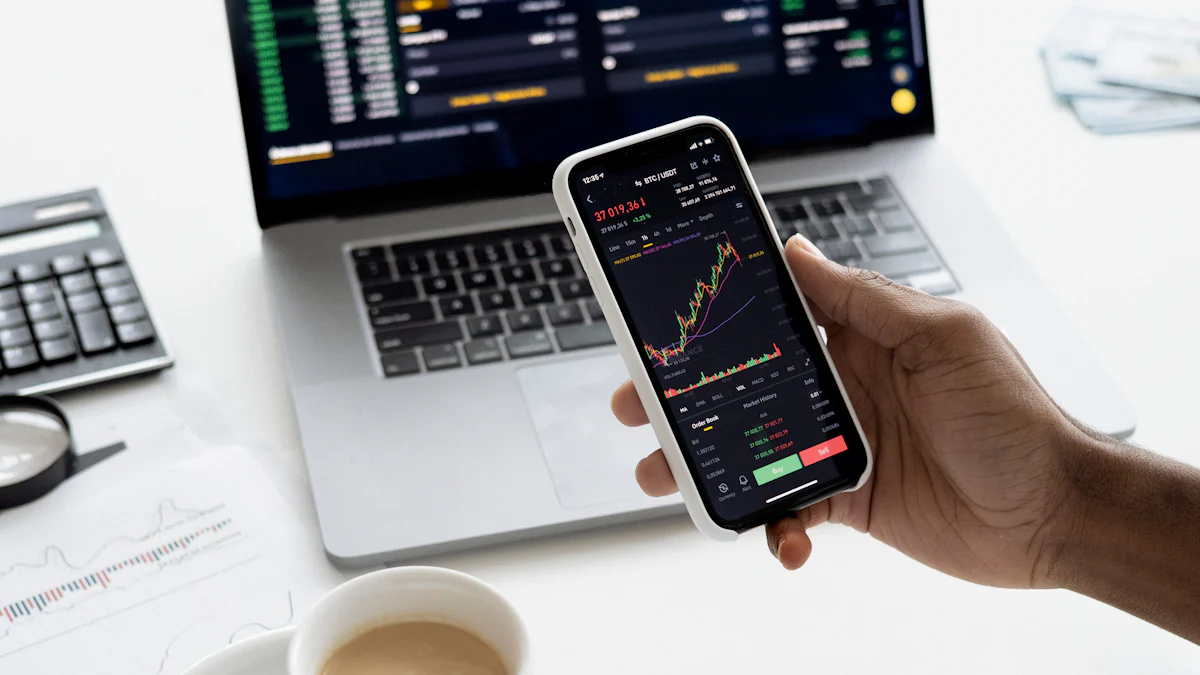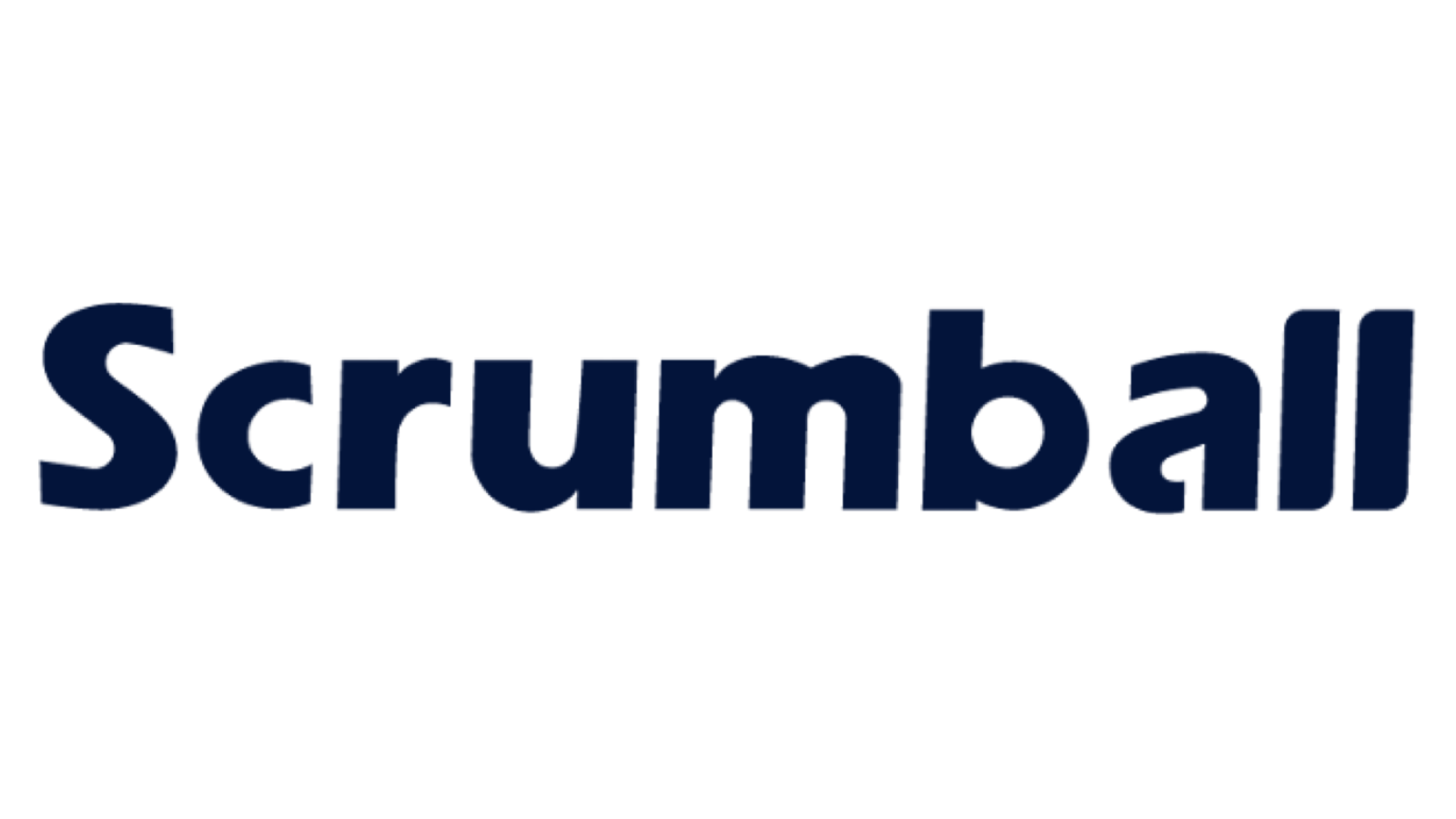Steps to Master Marketing Automation Trends in 2025

Imagine having tools that save you time, boost your campaigns, and keep your customers coming back. That’s the power of mastering marketing automation trends in 2025. With 62% of marketers calling automation essential and 64% already using AI-driven tools, it’s clear this isn’t just a passing trend. Businesses are seeing real results—like a 77% ROI in the first year and a 14.5% jump in sales productivity. By staying ahead, you’ll not only streamline your processes but also create personalized experiences that drive loyalty and revenue.
Understanding Marketing Automation Trends

Defining Marketing Automation in 2025
Marketing automation in 2025 is more than just scheduling emails or posting on social media. It’s about creating smarter systems that adapt to your customers’ needs in real time. Imagine campaigns that adjust automatically based on how your audience interacts with them. That’s the future. Tools now integrate with voice assistants and smart devices, making customer engagement more seamless than ever. Predictive lead scoring is also stepping up, helping you focus on leads most likely to convert. These advancements mean you can deliver the right message at the right time, every time.
Why Marketing Automation Trends Matter
Staying on top of marketing automation trends is crucial if you want to stay competitive. Why? Because the future of marketing is all about understanding your customers better and acting faster. AI and machine learning are transforming how you connect with your audience. They’re helping you create personalized experiences that feel intuitive and natural. Plus, faster campaign cycles and cross-channel integration are becoming the norm. You’ll need to pivot quickly and ensure your messaging is consistent across platforms. Balancing automation with authenticity will also be key to building trust and loyalty.
Tip: Focus on delivering genuine value to your audience. Automation can handle the heavy lifting, but your brand’s voice should always feel human.
Key Features of Marketing Automation Tools
The tools available in 2025 are packed with features designed to make your life easier. Here’s a quick look at some of the most innovative ones:
| Tool | Features |
|---|---|
| Klaviyo | Advanced segmentation, automated email campaigns, and detailed analytics. |
| LeadSquared | Omnichannel drip campaigns, mobile app for field campaigns, and performance tracking. |
| Storylane | Personalized demo experiences and audience engagement tracking. |
| Customer.io | Retargeting for abandoned carts and personalized onboarding campaigns. |
| Zoho | Behavior tracking, targeted campaigns, and A/B testing. |
| ActiveCampaign | Behavior-triggered campaigns and robust reporting tools. |
These tools don’t just save time. They help you create campaigns that resonate with your audience, driving better results. Whether it’s through AI-powered personalization or omnichannel marketing, these features are designed to keep you ahead of the curve.
Benefits of Marketing Automation Best Practices
Enhancing the Customer Journey
Marketing automation transforms how you guide your audience through their journey. It’s not just about sending emails anymore. You can now create personalized experiences at scale. Automation tools analyze user behavior, demographics, and preferences to deliver tailored content. For example, automated workflows nurture leads with targeted drip campaigns, keeping them engaged until they’re ready to convert.
You’ll also save time by automating repetitive tasks, giving your team more room to focus on creative strategies. Plus, data-driven insights help you track customer interactions and refine your approach. When you know your audience better, you can deliver the right message at the right time, making every interaction meaningful.
Pro Tip: Use automation to connect with your audience across multiple channels. Consistency builds trust and keeps your brand top of mind.
Boosting Efficiency and Productivity
Automation doesn’t just make your life easier—it makes your marketing smarter. By automating repetitive tasks, you free up time for strategic planning. Imagine scheduling social media posts, email campaigns, and lead nurturing workflows all in one go. That’s efficiency at its best.
Automation tools also provide real-time analytics, helping you make informed decisions. You’ll know what’s working and what’s not, so you can adjust quickly. And with personalized marketing, you’ll see higher engagement rates. Businesses using automation report a 14.5% boost in sales productivity. That’s a game-changer for any team.
- Simplify campaign management with automation platforms.
- Use data insights to optimize your strategies.
- Focus on building relationships while automation handles the rest.
Driving ROI and Revenue Growth
A successful marketing automation strategy directly impacts your bottom line. Companies using automation see an average ROI of 77% in the first year. For every dollar spent, you can expect a return of $8.71. That’s not just impressive—it’s essential for growth.
Take PaperStyle.com, for example. After implementing automation, they achieved a 244% higher open rate and a 330% increase in revenue per mailing. Acteva saw a 350% ROI and $2 million in additional revenue. These numbers show how automation turns engagement into tangible results.
When you align automation with your goals, you’ll drive revenue while building lasting customer relationships. It’s not just about following trends—it’s about staying ahead of them.
Step-by-Step Guide to Implement Marketing Automation Trends
Define Clear Marketing Objectives
Before diving into automation, you need a clear plan. Without defined goals, your efforts might feel scattered. Start by outlining specific and measurable objectives for your marketing campaigns. Do you want to increase engagement, boost conversions, or improve retention? Knowing your goals will guide your strategy.
Next, know your audience. Segment them based on demographics, preferences, and behaviors. This helps you create personalized communication that resonates. Map out the customer journey to identify key touchpoints where automation can make the biggest impact. For example, you can automate welcome emails or abandoned cart reminders.
Don’t forget to integrate with a CRM. This ensures your marketing and sales teams stay aligned. Start small by automating simple tasks like follow-up emails. As you gain experience, expand to more complex workflows. Regularly update your database to keep your targeting accurate. And always monitor key metrics like click-through rates to refine your approach.
Tip: Use A/B testing to experiment with different strategies. It’s a great way to see what works best for your audience.
Identify the Right Tasks for Automation
Not every task needs automation. Focus on repetitive ones that don’t require emotional intelligence. For instance, data collection and initial lead sorting are perfect candidates.
Here are some common tasks you can automate:
- Email campaigns: Use templates to create and schedule emails effortlessly.
- Lead nurturing: Set up workflows to engage prospects based on their actions.
- Report generation: Automate dashboards to track key metrics like ROI and engagement.
By automating these tasks, you’ll save time and ensure consistency across channels. This frees you up to focus on creative strategies that drive results.
Select the Best Automation Tools
Choosing the right tools is crucial for a successful marketing automation strategy. Look for tools that align with your goals and budget. Here’s a quick guide to help you decide:
| Criteria | Description |
|---|---|
| Pricing | Make sure the tool fits your budget while offering a strong ROI. |
| Features and Functionality | Check for essential features like email marketing, analytics, and personalization. |
| Scalability | Pick a tool that grows with your business and handles increased campaigns seamlessly. |
| Ease of Use | Choose an intuitive design to reduce the learning curve for your team. |
| Integrations | Ensure it integrates with your CRM and other platforms for smooth workflows. |
| Support | Look for tools with strong customer support and helpful resources like tutorials. |
The right tools will simplify your processes and help you stay ahead of marketing automation trends. Whether it’s managing campaigns or analyzing data, the right software makes all the difference.
Personalize Strategies for the Customer Journey
Personalization is the secret sauce for creating memorable customer experiences. With marketing automation tools, you can hyper-personalize content at scale. These tools collect data on customer interactions, behaviors, and preferences, helping you know your audience better. By segmenting your audience based on factors like location, purchase history, or browsing behavior, you can deliver personalized communication that resonates.
For example, behavioral triggers like abandoned cart emails or product recommendations make customers feel seen and valued. Automated workflows also nurture leads through targeted drip campaigns, keeping them engaged until they’re ready to convert. This approach doesn’t just improve efficiency—it transforms the customer journey into a seamless and meaningful experience.
Pro Tip: Use automation to create experiences across channels. Consistency builds trust and keeps your brand top of mind.
Integrate Automation Across Channels
To maximize the impact of marketing automation, you need to integrate it across all your channels. Start by aligning your systems, like your CRM, for a cohesive strategy. This ensures smooth workflows and better communication between your marketing and sales teams. Behavior-based triggers can then enable real-time, personalized interactions, boosting engagement.
Segmentation is another game-changer. By tailoring messages to specific audience groups, you can improve relevance and customer satisfaction. Don’t forget to monitor metrics like click-through rates and conversions to refine your campaigns. A/B testing different elements, like subject lines or visuals, can also help you optimize performance.
Quick Tip: Start small and scale your efforts gradually. This way, you can test what works best before expanding.
Train Your Team on Automation Tools
Your team’s ability to use automation tools effectively can make or break your strategy. Invest in training programs that match your team’s needs. Predefined training programs, led by experienced consultants, can teach your team how to execute powerful campaigns. For a more tailored approach, custom training options address varying technical skills within your team.
Technical mentoring programs are another great option. These focus on hands-on learning through shadowing and collaborative sessions. Encourage your team to explore features like analytics and personalization to unlock the full potential of your tools. Regular practice and knowledge-sharing sessions can also boost confidence and efficiency.
Note: A well-trained team ensures you get the most out of your marketing automation tools.
Monitor and Optimize Automation Strategies
Once you’ve set up your automation, the real work begins. Monitoring and optimizing your strategies ensures they deliver the results you’re aiming for. Think of it as fine-tuning a machine—small adjustments can lead to big improvements.
Start by tracking key metrics to measure the success of your automated campaigns. Conversion rates are a must-watch. They tell you how well your efforts are turning leads into customers. Engagement metrics, like click-through rates and time spent on your website, reveal how your audience interacts with your content. Revenue metrics tie your marketing efforts directly to financial outcomes, showing the ROI of your campaigns.
Use these insights to identify what’s working and what’s not. For example, if engagement drops after a certain email in your workflow, it might need a tweak. A/B testing can help you experiment with different subject lines, visuals, or call-to-actions to see what resonates best. Don’t forget to analyze data regularly. Trends can change quickly, and staying updated keeps your strategies relevant.
Automation tools often come with built-in analytics dashboards. These make it easy to track performance in real time. Use them to spot patterns and adjust your approach. If a particular channel isn’t performing, consider reallocating resources to one that is. Consistency across the customer journey is key, so ensure your messaging aligns across all touchpoints.
Pro Tip: Schedule regular reviews of your automation workflows. Even small updates can keep your campaigns fresh and effective.
By staying proactive, you’ll maximize the impact of your automation efforts and keep your customer journey seamless and engaging.
Emerging Event Marketing Trends and Automation in 2025

AI-Driven Personalization
AI is revolutionizing event marketing automation by making personalization smarter and more impactful. You can now use AI to create tailored experiences that boost engagement and attendee satisfaction. For example, automation tools can handle time-consuming tasks like sending personalized emails or analyzing attendee behavior. This frees you up to focus on strategy and delivering memorable events.
AI also helps you understand your audience better. By analyzing data from past events, you can uncover preferences and trends. This insight allows you to craft future strategies that resonate with your audience. Imagine sending an attendee a reminder about a session they showed interest in or recommending networking opportunities based on their profile. These small touches make a big difference in the attendee experience.
Tip: Use AI-powered tools to personalize communication at every stage of your event. It’s a game-changer for building connections.
Sustainability in Event Marketing Automation
Sustainability is no longer optional—it’s essential. In 2025, event marketing automation is helping businesses adopt eco-friendly practices that reduce environmental impact. Digital tickets, recyclable materials, and virtual events are just a few ways you can make your events greener. These methods not only cut waste but also align your brand with eco-conscious values.
Sustainability isn’t just a nice-to-have anymore; it’s a must-have. By 2025, consumers will be looking to support brands that align with their values, particularly when it comes to environmental impact.
By embracing sustainability, you enhance your brand image and attract audiences who care about the planet. Plus, automation tools make it easier to implement these practices without adding extra work. For example, you can automate the distribution of digital materials instead of printing brochures.
Voice Search and Conversational AI
Voice search and conversational AI are reshaping how you approach event marketing automation. More people are using voice commands to find information, which means you need to optimize your content for this trend. Focus on creating conversational content that answers common questions your audience might ask.
SEO strategies are also evolving. Instead of just targeting keywords, you’ll need to understand user intent. For example, someone might ask, “What events are happening near me this weekend?” Your content should provide clear and engaging answers to these queries.
Conversational AI takes it a step further by enabling real-time interactions. Chatbots can answer attendee questions, recommend sessions, or even help with registration. These tools improve the attendee experience while saving you time.
Quick Tip: Start integrating voice search optimization into your event marketing strategies now. It’s the future of how people find and interact with content.
Full-Funnel Omnichannel Marketing
Imagine reaching your audience at every stage of their journey, no matter where they are. That’s the magic of full-funnel omnichannel marketing. It’s about creating a seamless experience across all channels, from the first interaction to the final conversion. With event marketing automation, you can make this process smoother and more effective.
Here’s how it works. Automation tools let you deliver personalized content at scale. Whether someone visits your website, interacts with your social media, or attends one of your events, they’ll feel like you’re speaking directly to them. This level of personalization strengthens relationships and keeps your audience coming back.
You also get the power to track customer interactions at every stage of the funnel. This means you can see what’s working and what’s not. For example, if a lead engages with your email but doesn’t register for an event, you can send a follow-up with a special offer. These small adjustments make a big difference in improving lead generation and nurturing.
Here’s why full-funnel omnichannel marketing is a game-changer:
- It creates cohesive experiences across multiple channels.
- It improves lead generation and retention.
- It builds loyalty by keeping your brand top of mind.
- It optimizes your ROI by using data to refine your strategies.
AI takes this to the next level. It helps you analyze data faster and predict customer behavior. For instance, AI can recommend the best time to send event reminders or suggest personalized networking opportunities. These insights make your campaigns smarter and more impactful.
By integrating event marketing automation into your strategy, you’ll stay ahead of the curve. You’ll not only attract more attendees but also keep them engaged long after the event ends. That’s the power of full-funnel omnichannel marketing.
Overcoming Challenges in Marketing Automation
Addressing Common Automation Challenges
Marketing automation can feel overwhelming, especially when you’re just starting out. Many businesses face similar hurdles, so you’re not alone. Let’s break down the most common challenges and how to tackle them:
| Challenge | Percentage (%) |
|---|---|
| Securing budget | 36.1 |
| Quality of customer data | 35.3 |
| Knowledge to set up different types of automation | 35.2 |
| Producing engaging content and communication | 33.9 |
Budget constraints often top the list. To overcome this, focus on high-impact areas where automation can deliver the most value. Struggling with data quality? Start by cleaning up your database and ensuring accurate inputs. If setting up automation feels tricky, invest in training or hire a consultant to guide you. And when it comes to creating engaging content, lean on AI-powered tools to generate ideas and streamline production.
Tip: Start small. Automate one or two tasks first, then expand as you gain confidence.
Ensuring Data Privacy and Compliance
Data privacy isn’t just a legal requirement—it’s a trust-building opportunity. Customers want to know their information is safe with you. Here’s how you can ensure compliance while keeping their trust intact:
- Familiarize yourself with legal frameworks like GDPR, CCPA, and PIPEDA.
- Obtain explicit consent before collecting or using customer data.
- Use encryption and authentication to secure and segment data.
- Regularly monitor and audit your data practices.
- Train your team on privacy best practices and legal implications.
- Appoint a Data Protection Officer (DPO) to oversee compliance.
By following these steps, you’ll not only avoid penalties but also show your audience that you value their privacy. This builds loyalty and strengthens your brand reputation.
Quick Note: Regularly review your data handling practices to stay ahead of changing regulations.
Quick Hacks for Seamless Implementation
Implementing marketing automation doesn’t have to be a headache. With a few smart strategies, you can simplify the process and get up to speed quickly:
- Organize your marketing assets with clear naming conventions.
- Involve your team by sharing tutorials and holding training sessions.
- Audit your workflows to identify time-consuming tasks for automation.
- Define clear goals using SMART criteria (Specific, Measurable, Achievable, Relevant, Time-bound).
- Choose tools that align with your immediate needs.
- Segment your audience based on behavior, demographics, and lifecycle stage.
These hacks save time and reduce confusion, making the transition to automation smoother. Plus, they help you focus on what matters most—building meaningful connections with your audience.
Pro Tip: Keep your team involved from the start. Collaboration ensures everyone is on the same page and ready to embrace new tools.
Mastering marketing automation trends in 2025 isn’t just about keeping up—it’s about staying ahead. Let’s recap the essentials:
- Keep your data accurate and up to date for reliable insights.
- Automate customer engagement to connect at the perfect moment.
- Invest in tools that adapt to new trends and train your team to use them effectively.
- Focus on sustainability by optimizing resources and aligning with customer values.
Staying updated with emerging trends is crucial. Personalization drives engagement, and predictive analytics help you anticipate customer needs. By refining workflows and analyzing data regularly, you’ll create seamless experiences that build loyalty.
Remember: Marketing automation isn’t just a tool—it’s a strategy. Start small, stay consistent, and watch your efforts transform into meaningful results. Now’s the time to take action and lead the way in 2025!
FAQ
What is the first step to start with marketing automation?
Start by defining your marketing goals. Ask yourself what you want to achieve—better engagement, higher conversions, or improved retention. Once you know your objectives, you can choose the right tools and strategies to match your needs. Clear goals make everything easier.
How do I choose the best marketing automation tool?
Look for tools that fit your budget and offer features like analytics, personalization, and scalability. Check if they integrate with your existing platforms. Ease of use is key, so pick something your team can learn quickly. Strong customer support is a bonus.
Can small businesses benefit from marketing automation?
Absolutely! Automation saves time and boosts efficiency, even for small teams. You can automate repetitive tasks like email campaigns or social media posts. This frees you up to focus on strategy. Plus, many tools offer affordable plans tailored to small businesses.
How do I ensure my automated campaigns feel personal?
Use data to segment your audience based on behavior, preferences, or demographics. Then, craft messages that speak directly to each group. Behavioral triggers, like abandoned cart emails, make interactions feel timely and relevant. Always keep your brand voice authentic and human.
What’s the biggest mistake to avoid with marketing automation?
Don’t “set it and forget it.” Automation needs regular monitoring and optimization. Track metrics like engagement and conversions to see what’s working. If something isn’t performing, tweak it. Staying proactive ensures your campaigns stay fresh and effective.
See Also
Key Influencer Marketing Trends You Should Follow in 2024
Effective TikTok Influencer Marketing Techniques for 2024
15 Essential Influencer Marketing Platforms for 2024
